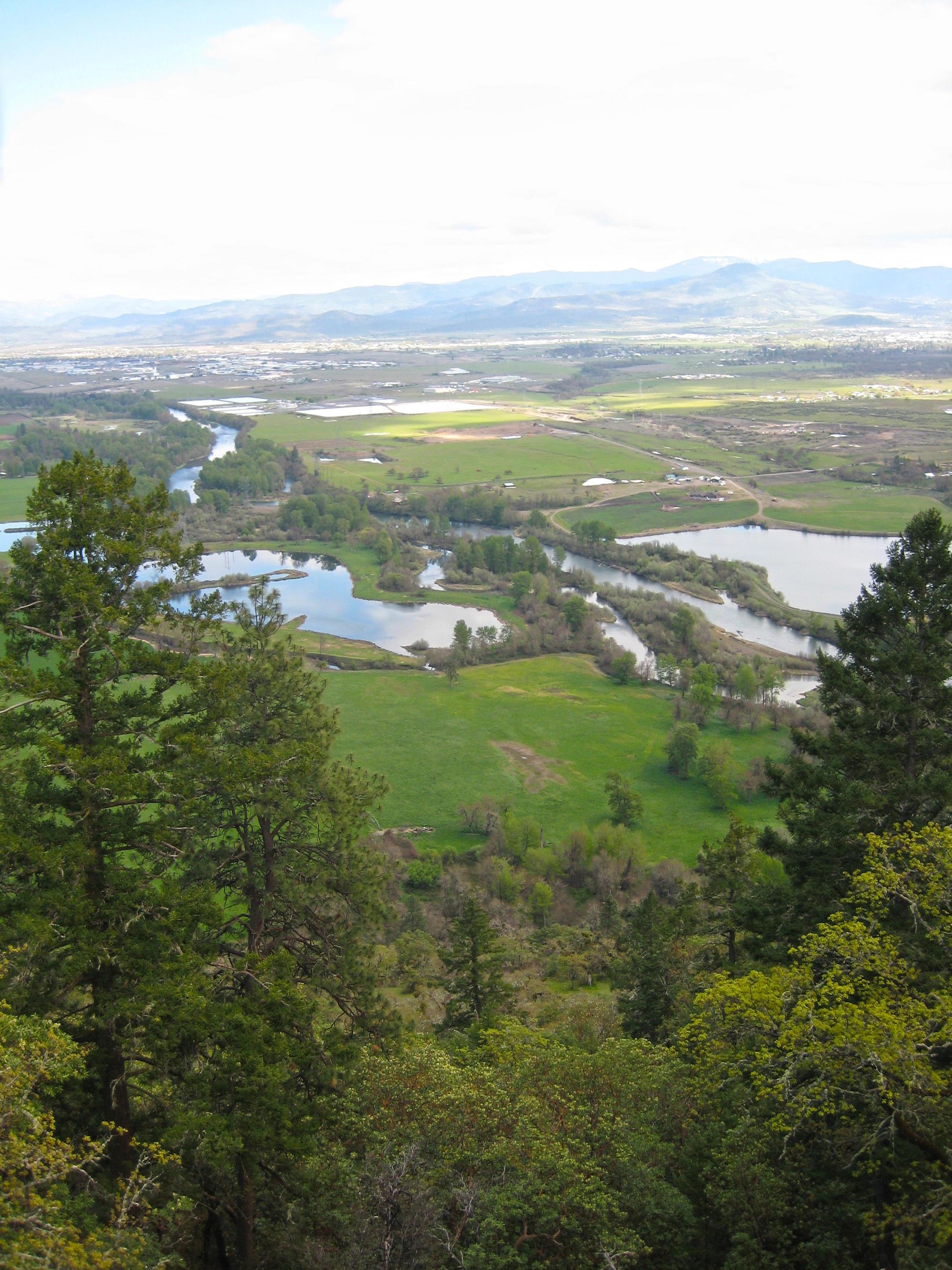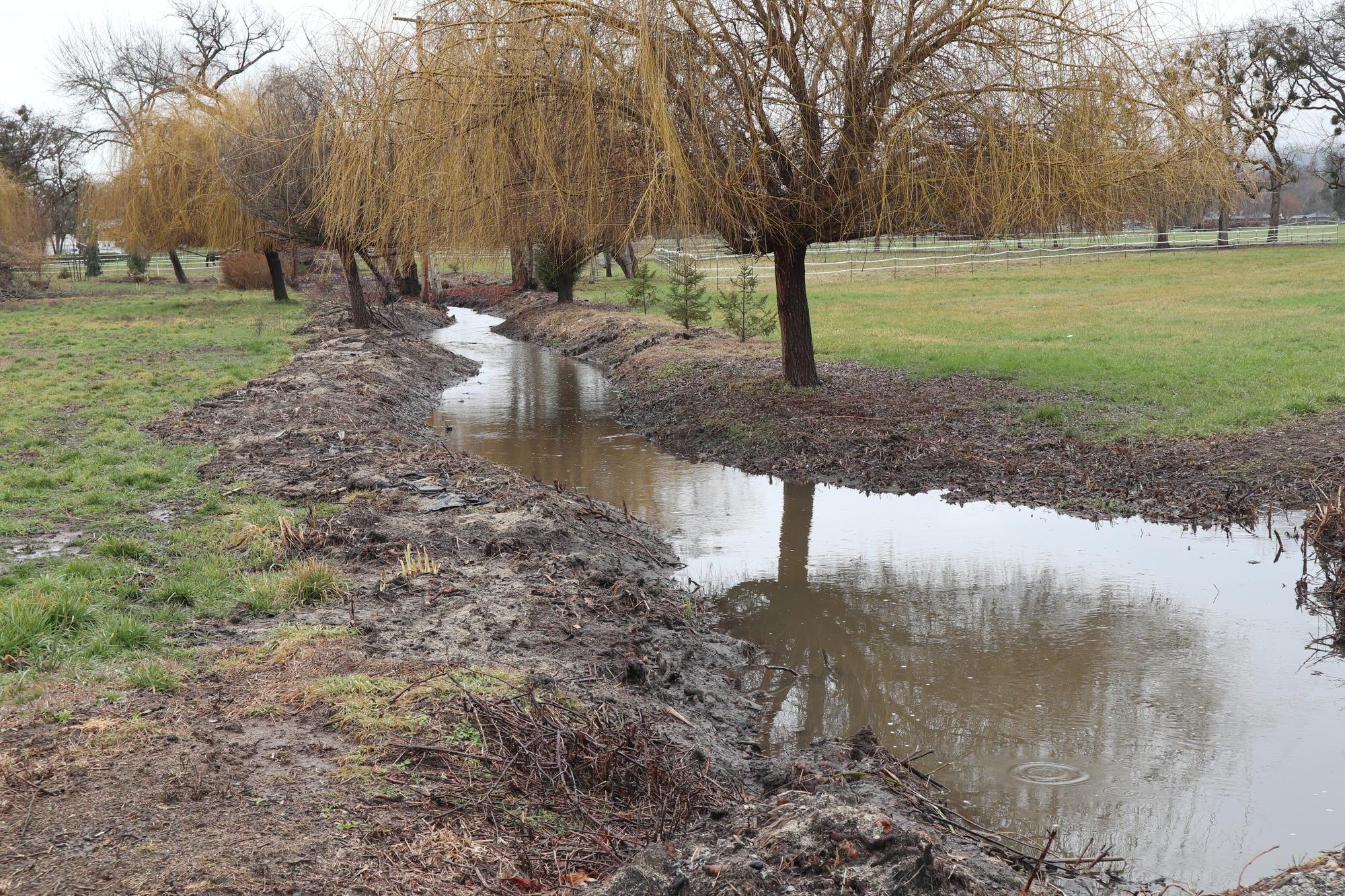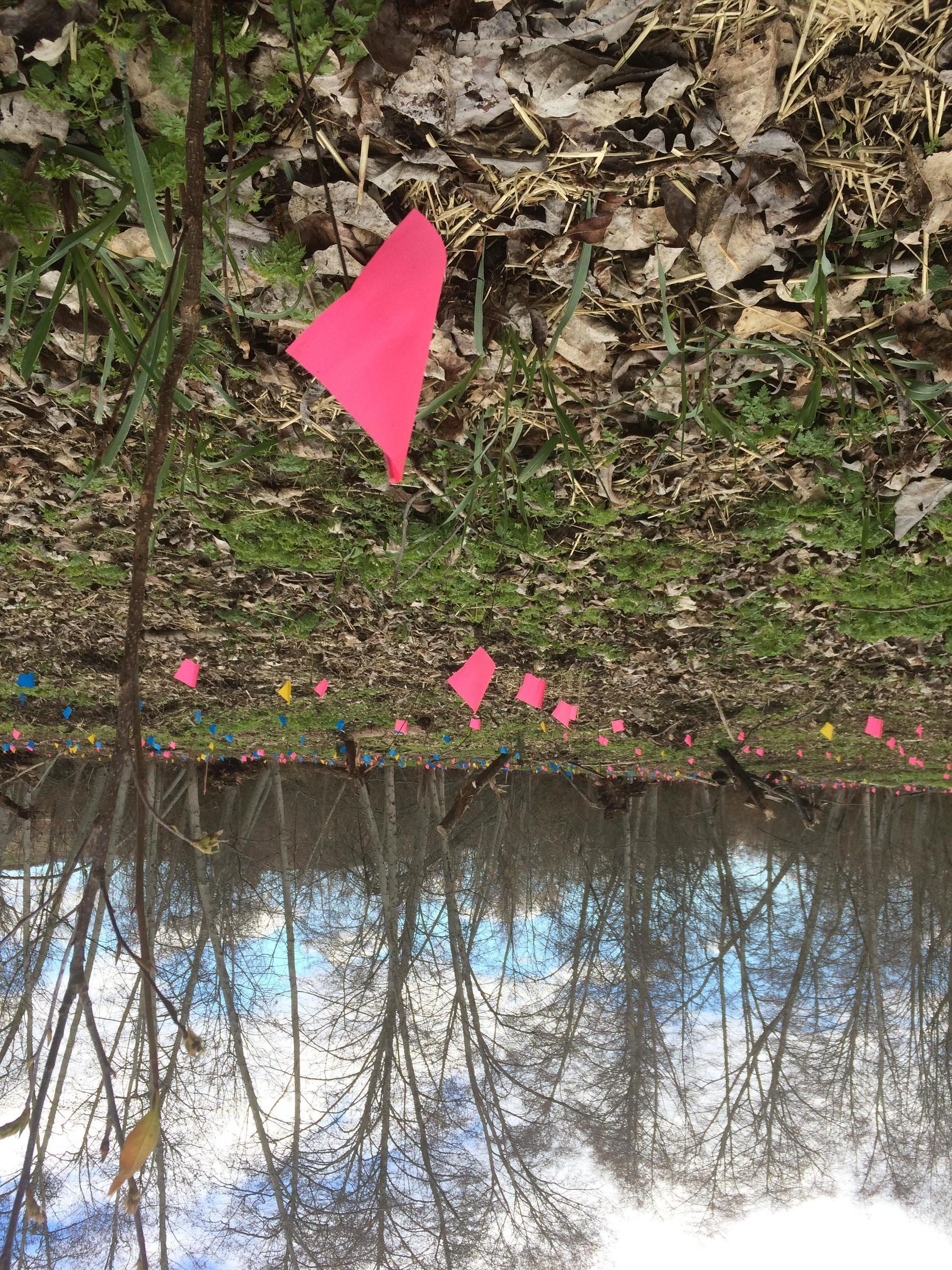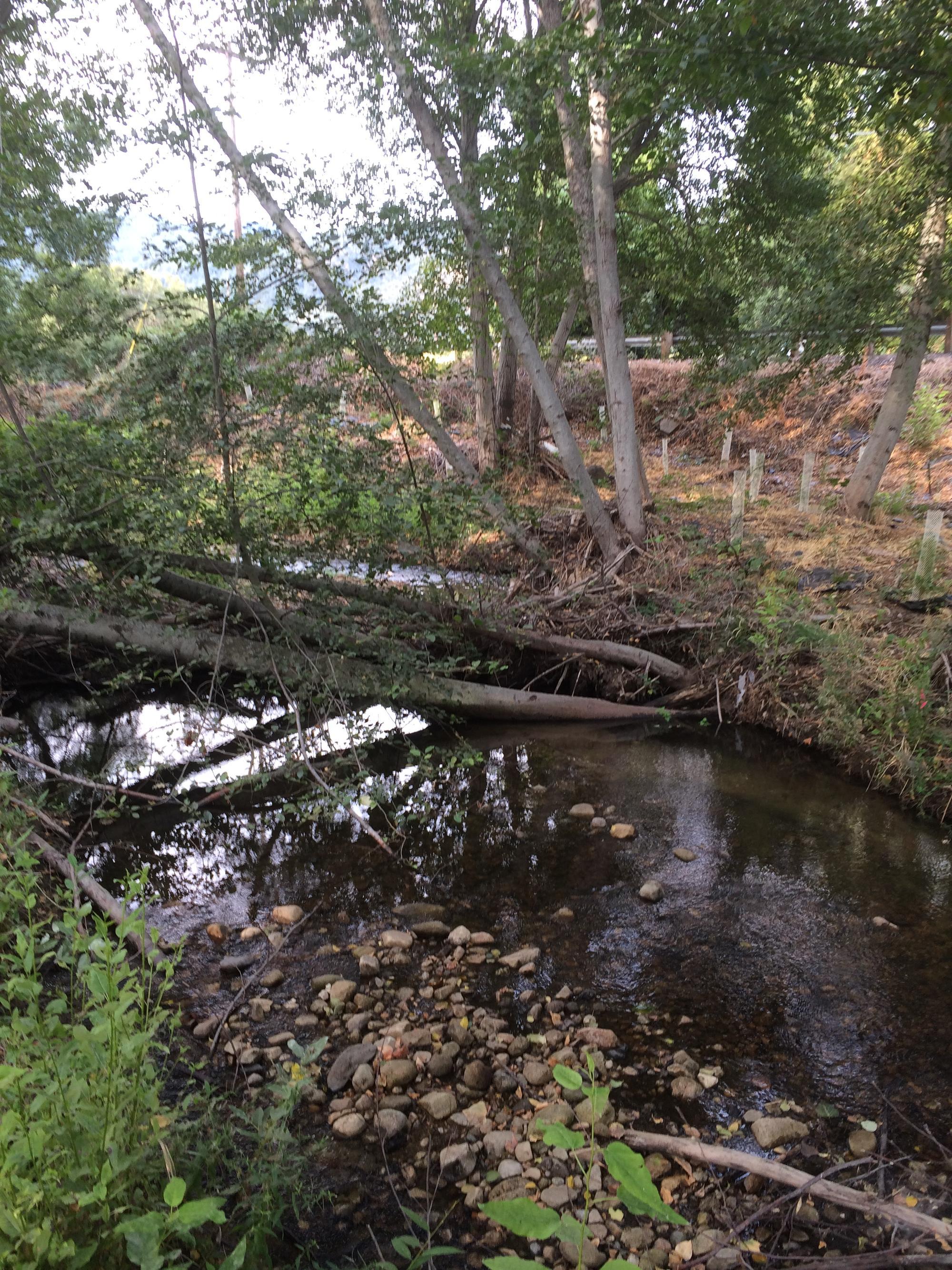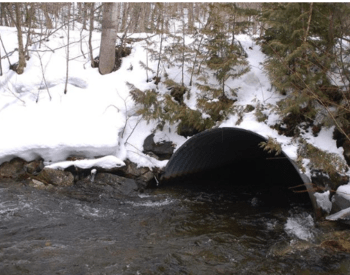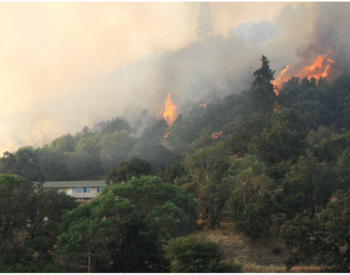Streams provide many benefits to landowners. They can be a natural resource, providing water for livestock or crops, or they may simply provide the joy of a cool, shady area full of wildlife. But streamside areas are critical for many reasons.
The area alongside a stream or other body of water is called the riparian area — a place where moisture interacts with the surrounding soils and geology, creating a special habitat. This zone is easy to identify, since the plants and trees are often different from those in the upland areas away from the stream.
Diverse streamside, or riparian, areas are vital for supporting water quality and wildlife habitat in a multitude of ways. Good streamside stewardship will help ensure the many benefits a stream provides into the future.
Note: Most land activities in and near streams are regulated. Be sure to familiarize yourself with the rules and regulations in your area before undertaking any development, restoration, modification or other activity.
Create a vegetated buffer strip
Plants in riparian areas protect water quality in many ways: by reducing erosion, filtering pollutants, slowing floodwaters, increasing groundwater recharge, providing cooling shade and serving as wildlife habitat. Here are some actions you can take to nurture plant life on your riparian property.
- Promote a vegetated buffer strip along the stream that emphasizes native trees, shrubs, grasses and plants suitable for the site. Vegetated buffers reduce erosion, filter sediment and other pollutants, create stream shade to maintain cooler water, and provide wildlife habitat.
If you want to create or expand a streamside buffer, the width you plan for will depend on local regulations, the size of the stream, adjacent slope and land uses, and your personal objectives. Some riparian functions, such as reducing erosion along small streams, can be achieved with relatively narrow buffers. Other functions, such as providing shade and filtering pollutants, may require larger buffers. - Know your local regulations. Oregon city and county governments, the Department of Agriculture and the Department of Forestry require careful management of trees, shrubs and other vegetation along streams and may dictate minimum buffer widths in many circumstances. These regulations vary widely, from 10 feet wide for many small seasonal streams to 50 feet and more for larger streams that flow year-round and have salmon or trout. (see “Follow the rules,” page 4).
- Limit mowing. Don’t mow within 10–25 feet, or more, of the stream bank. Although a lawn may look neat, more diverse native vegetation does a better job of protecting water quality and providing habitat.
- Avoid the removal of trees, shrubs and native plants in the riparian zone. In many cases, such removal is prohibited by law.
- Plant native species. These are adapted to local conditions and will help promote the many beneficial functions of riparian areas. Native bushes and trees found along streams in southwest Oregon include many willows, Ponderosa pine, black cottonwood, bigleaf maple, Oregon ash, white alder, blue elderberry and red-osier dogwood. Become familiar with the native riparian species of your region. Observe what grows well in your area. Work with a native plant nursery and choose the best plants for your site.
- Remove invasive species such as Armenian or Himalayan blackberry, Japanese knotweed, and purple loosestrife, where feasible. These plants limit the regeneration and growth of native species. Invasive species are often successful at colonizing disturbed areas, but are inferior to natives in terms of riparian function. Local regulators may require a permit and replanting plan to remove invasive species.
- Replant areas of bare ground. Soil can quickly erode from bare patches, sending sediment into streams. Plant a mixture of native shrubs, trees and grasses to establish a fully vegetated site and discourage invasive species. Never leave bare earth exposed to winter rains. While plants are getting established, place temporary silt fences, straw bales, or compost mounds on bare areas to stop overland runoff, and spread a heavy layer of loose straw 2 to 6 inches deep along bare spots.
- Check regulations for forested areas. If your stream is forested, review Forest and Woodlands: Protecting an Ecosystem, EM 9245. The Oregon Forest Practices Act governs activity around streams in forested areas.
Keep it clean
- Don’t throw debris over the stream bank or pile leaves or manure in the riparian zone. These materials, when added to a stream, will lower oxygen levels as they decompose. This type of dumping is a form of water pollution, and violators could be cited.
- Don’t use pesticides, herbicides or fertilizers within riparian zones. These substances can degrade water quality. In some instances, such as when managing invasive blackberry and knotweed, it may be OK to carefully apply herbicides that are approved for use in aquatic applications. Ensure that application rates in adjacent areas, such as pastures, follow label instructions and are not excessive. Note that in hot weather many herbicides can volatilize and spread far beyond the intended location. Always follow directions on the label.
Leave it natural
- Protect wildlife habitat: Wildlife love diversity. Encourage diverse native plant growth with multiple layers of vegetation, including low plants, shrubs and trees. The native plants that grow in riparian areas provide shelter and a wide variety of nuts, berries, nectar and insects for food.
- Birds. Riparian areas provide critical migratory and breeding habitat for many bird species. With diverse plants and access to water and food, stream corridors are often especially rich in bird life. If you plan to improve your stream by removing invasive species such as blackberry, be sure to plan your work outside of the bird breeding season; even invasive blackberries can serve as nesting habitat.
- Fish. Trout and salmon need cool, clear water, streambeds with rock and gravel, and in-stream habitat structure such as logs and overhung banks. Trees and shrubs along streams provide shade and help maintain cool water. Many areas are experiencing changes in temperature ranges, including warmer summers. Shade is an important resource for the future of our streams and fish.
- Beavers. Beavers are considered a “keystone” species. That means their activities play a crucial role in supporting the functions of riparian ecosystems that help fish, wildlife habitat, stream flows, and water quality. You may not want a beaver to harvest a prized tree or to cause a road to flood, but finding ways to tolerate or work around their activity is good for streams. Consider installing strong wire fencing around prized trees and plantings where beavers are active.
- Respect the meander belt. Natural streams and rivers meander and change their courses over time, especially in flatter terrain. For many reasons, people often want to use or develop the areas next to streams. This frequently leads to problems with flooding, erosion and decreased water quality. Where possible, respect your stream’s historic meander belt to minimize conflicts. Limit building in riparian areas. Incision or downcutting of streams can occur when streams are straightened or if water runoff from the surrounding landscape is excessive.
- Design culverts and bridges to accommodate high water flows and allow for fish passage in fish-bearing streams.
- Design roads with care. Roads can be a major source of erosion, sediment and pollution runoff into creeks. Is your road design mitigating possible negative impacts on nearby water bodies? See other publications in this series in the OSU Extension Catalog, for additional information.
In-stream habitat structure
A healthy stream for fish and wildlife contains leaves, branches, and logs. This organic material provides important food and habitat for aquatic organisms, from fish to mayflies. While too much material may cause a flooding hazard under certain circumstances, in most cases, it helps to dissipate the destructive erosive power of high water. When possible, let logs stay in streams.
Manage livestock and grazing
Grazing livestock in riparian areas can result in increased erosion, increase of noxious weeds, decreased streambank stability and decreased water quality from nutrients and pathogens in streams. These steps can help reduce problems:
- Consider fencing livestock out of riparian zones.
- Develop off-channel water sources in upland areas where adequate forage is available to draw livestock away from the stream area.
- Manage grazing practices. Maintain the growth of shrubs, trees and other plants that help stabilize banks. Timing and rest are critical. Avoid riparian grazing during the rainy season. Allow adequate time for plants to rest and regrow. Avoid season-long grazing; move livestock frequently.
- Study up. If you use your creek for irrigation or have pasture in the riparian area, be sure to review pasture guidelines in the Rural Resource Series, available in the OSU Extension Catalog, and be familiar with the Agricultural Water Quality Management Act regulations that apply to your activities.
Follow the rules
Understand the regulations applying to your stream and its beneficial uses. Does it have fish? Is it a drinking water source? Is it used for irrigation? Recreation? Navigation?
Many counties have riparian ordinances that prohibit the removal of riparian vegetation within a certain distance of streams, rivers and other waterways. You may need a permit to remove invasive species.
The Agricultural Water Quality Management Act regulates potential water pollution from farms and ranches under the Clean Water Act.
The Oregon Forest Practices Act regulates forest management activities and practices affecting water quality on forestland.
Individual municipalities may have their own riparian ordinances.
Resources
If you have more questions, contact your local county Extension office, Soil and Water Conservation District, watershed council, Oregon Department of Fish and Wildlife office, the Oregon Water Resources Department and their watermaster, or other local resources.
- U.S. Department of Agriculture Natural Resources Conservation Service Riparian Systems
- Riparian Health: Evaluating the Health of Riparian Areas, an Overview. Extension Foundation.
- Polluted Runoff: Nonpoint Source Pollution. Environmental Protection Agency.
- The National Pollutant Discharge Elimination System: An Oregon NPDES pesticide general permit is required for certain pesticide applications in, over, or near water. Contact the Oregon Department of Environmental Quality for information.
- Guide to Oregon Permits in Riparian Areas. Be sure to verify the most up-to-date regulations with the proper governing body.
© 2019 Oregon State University.
Extension work is a cooperative program of Oregon State University, the U.S. Department of Agriculture, and Oregon counties. Oregon State University Extension Service offers educational programs, activities, and materials without discrimination on the basis of race, color, national origin, religion, sex, gender identity (including gender expression), sexual orientation, disability, age, marital status, familial/parental status, income derived from a public assistance program, political beliefs, genetic information, veteran’s status, reprisal or retaliation for prior civil rights activity. (Not all prohibited bases apply to all programs.) Oregon State University Extension Service is an AA/EOE/Veterans/Disabled.

